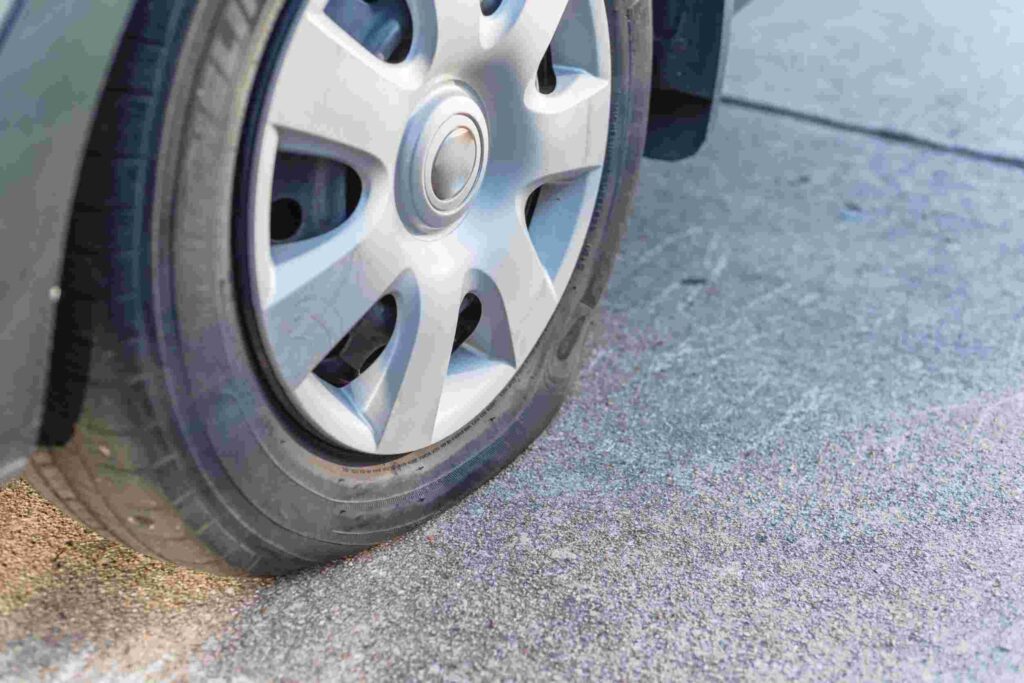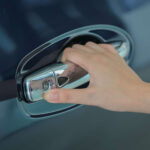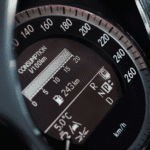Although the traction control light flashes when operating, if it stays on permanently, it’s definitely not working. So, that leads to the question: What causes the traction control light to stay on? Well, quite simply, it means there is a fault. This article covers reasons the traction control light won’t turn off and more.
What Is Traction Control Light For?
The traction control light indicates that the vehicle’s traction control system (TCS) is active or flashes because it has detected a loss of traction (wheels spinning). This system assists in maintaining stability and preventing wheel spin during acceleration by restricting or applying more engine power and braking force to specific wheels to improve control and grip in slippery or uneven conditions.
Traction control light is on permanently
When the traction control light stays permanently illuminated, it is a sign to you as the driver that there is a fault or it has been switched off. The traction control system will remain disabled until the fault is rectified or it is turned back on. The fault code is stored in the ECU memory, so it can easily be read with a diagnostic tool. However, sometimes, you can get a generic traction control fault warning, which means manually checking each possible component for a fault.
9 Reasons Why the Traction Control Light Won’t Turn Off!
Although there are nine reasons below for the TCS light to stay on, not all of them are very common. When the TCS light stays on, if there is a fault with a related system, you can expect more than one light on the dashboard, and the other light will likely be the reason all of them are on.
1. Sensor malfunction
The TCS utilizes multiple car sensors to determine how aggressively it should cut engine power or how much braking force to apply to bring the traction back under control.
Most modern vehicles have yaw rate, steering angle, accelerometer, and gyroscopic sensors, which can all fail. When any of them fails, the incorrect information is provided to the ECU, which processes the wrong information. it can then not activate the traction control system because it knows the information is inaccurate, so it will illuminate the TCS warning light. Unfortunately, the only way to determine an issue with one of these sensors involves plugging the car into a diagnostic tool and reading the fault code.
2. Wheel speed sensor issues
Modern vehicles are equipped with a wheel speed sensor at each wheel to measure the rotational speed of the wheels and display this information on the dashboard. When the traction control system detects that one wheel is spinning faster or slower than the others, it can use the A.B.S. to apply the brakes or reduce engine power to regain traction.
A wheel speed sensor issue means that one or more of these sensors is not providing accurate data or has failed. This can lead to the traction control system not functioning correctly and the traction control light staying on.
3. Low brake fluid
Traction control requires the use of brake fluid through the A.B.S. to apply a small amount of braking force to limit wheel spinning under hard acceleration. If the brake fluid is dangerously low, there is a risk that the A.B.S pump or master cylinder could draw in air, meaning there could be an issue with the brakes affecting the operation of the TCS.
This scenario is rare because you would usually get some indicator on the dashboard to let you know the brake fluid is low before it gets to this point.
4. Faulty abs
The traction control system uses the A.B.S to limit wheel spin by gently applying a small amount of brakes when the vehicle breaks traction. However, any fault with A.B.S means the TCS cannot operate which will throw both the TCS and A.B.S light on. The most common faults with A.B.S are:
- Broken pulse ring
- Faulty A.B.S sensor
- A.B.S modulator fault
- Electrical fault
Plugging the car into a diagnostic tool will give you the exact reasons the A.B.S. has failed.
5. Wiring fault
As with any electrical component, wiring faults can include split or frayed wiring, corroded connectors, poor termination, loose connections, and short circuits. If a wiring fault is to a related TCS component, it will not operate, and the light will stay on. You will likely experience other lights permanently displaying on the dashboard depending on which part the wiring fault leads to.
6. Blown fuse
Although traction control doesn’t usually have a specific fuse, in some cars it does, but other related components do. For example, if the fuse blows for the A.B.S., the TCS will not operate, although you would usually also have an A.B.S. warning light on the dashboard.
It’s worth bearing in mind that the blown fuse doesn’t necessarily have to be a traction control fuse and could be a related system; without that, the TCS cannot operate.
7. Incorrect tire pressure
Incorrect or low tire pressure can trigger the traction control light to come on due to its impact on the vehicle’s stability. The car is programmed to run correctly with a specific tire size pumped to a particular pressure.
If the tire pressures are extremely low or too high, there will be reduced traction between the tires and the road. This uneven traction can confuse the vehicle’s sensors, which monitor wheel speeds and conditions. The traction control system might interpret the differing wheel speeds as a loss of traction or wheel slippage, causing it to engage and illuminate the traction control light.

8. Wrong tire size
For a similar reason to the tire pressures causing a problem, the car is designed to have a specific rolling radius regardless of the tire size. It should always have the same rolling radius.
However, if you have one random-sized tire on the front left and the correct one on the right; the car will recognize the difference. It cannot counteract running with the incorrect sized tire, so it, shuts off systems such as the traction control.
This isn’t something that randomly happens after six months of changing the tires, but it is more common after just having the tires changed. The tire fitter may have accidentally put the wrong size on it. It also happens a lot after putting the spare tire on.
9. Electronic stability control system fault
The Electronic Stability Control (ESC or DSC), some manufacturers have a different name for it, is a similar system to the TCS in that it keeps the driver in complete control of the vehicle. When turning or braking, most commonly in emergencies or bad weather conditions the ESC stops the wheels from sliding, spinning or skidding.
An ESC system fault can cause the traction control light to stay on because the ESC and traction control systems are closely linked. Both systems rely on data from shared sensors, like wheel speed and yaw rate sensors, to assess vehicle stability and traction. When the ESC system detects a fault or malfunction from components, such as sensors, control units, or software. The result is it disables the ESC and traction control functions. Again, with an ESC fault, you will experience more than one light displayed on the dashboard, usually ESC, TCS, and A.B.S.
Can You Still Drive With the Traction Control Light
On?
Driving with the traction control light on is possible; the car will not randomly shut off. Not so long ago, there wasn’t such a thing as traction control on vehicles, and when driving, you needed to manage how hard you pressed the pedal to stop the car from breaking traction.
However, there are a few points to be aware of, as depending on the cause of the fault driving could be problematic. For example, if you are driving on damp or wet roads and need to accelerate hard to get yourself out of trouble, the wheels will spin easily, meaning you aren’t accelerating as quickly as you may need.
Another point to consider is if the problem is a faulty A.B.S. component or dangerously low brake fluid, the brakes could be compromised, and stopping quickly in an emergency could become dangerous. I know this isn’t while accelerating, but the traction control light might be the first indication you have a fault with another related system. So you should know the fault before considering if you should drive.
What to Do if the Traction Control Light Is On?
There are a few things you can try at home yourself to get the traction control light to reset:
- Button reset – Most vehicles have a button to turn off the traction control system; try toggling the TCS off and on. When you turn it back, the TCS will try to recalibrate; however, if the light turns straight back on, there is a fault.
- Check the tire pressure and tire sizes – For the reasons indicated above perform a thorough check of the tires, including their condition, sizes, and pressures.
- Check the brake fluid – Next, double-check the brake fluid level.
- Check fuses – If the vehicle has a specific TCS fuse, check it hasn’t blown. Also, check the condition of the fuses for any related components.
- Diagnostic check – Unfortunately, the last step is to plug the vehicle into a diagnostic tool to read and find the fault. This might mean having to use a mechanic for diagnostics and repair.
Final Words
Having any warning lights on the dashboard is troubling, however the TCS isn’t as much of a problem as some of the others. One thing to always do with the TCS is to double check you haven’t accidently disabled it, if your car has this function.
Failing that, the light, permanently on, indicates a fault that needs repairing. Although this article has most of the causes unfortunately, a large portion of them require diagnostic tools to check the operation of components. This might mean you must take the car to a mechanic for repair.









